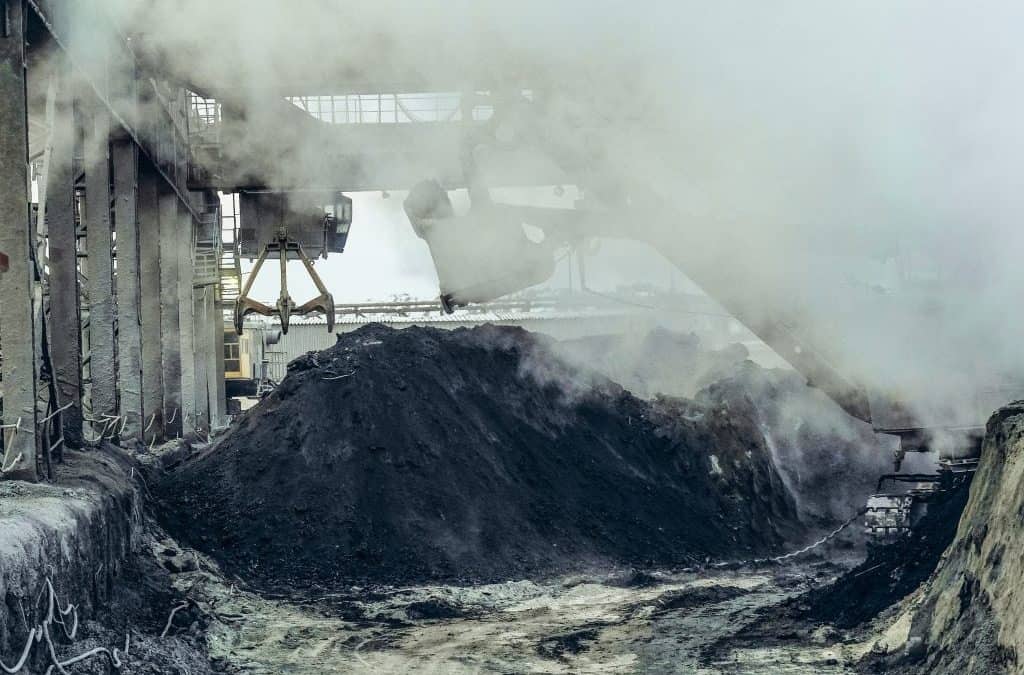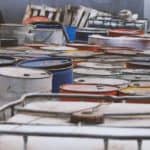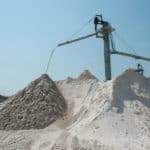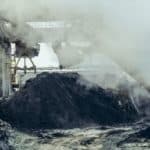Foreword
With this series, I hope to put into words many of my experiences and the lessons learned in my industrial hygiene career to date. I have been working as an industrial hygienist for over thirteen years. I have traveled the country, performing industrial hygiene assessments at hundreds of facilities. It is truly wonderful work, and I absolutely love what I do. That said, I have gained a lot of experience in the field. As I like to say, “having experience means you have made all the mistakes”. They are a great (maybe the best) opportunity to learn, but clients don’t hire hygienists to make errors on their dime. As such, I aspire to save some headaches and extra stress to others in my field with this short write-up on “Total Dust” (the quotation marks are intentional, read on to learn why!).
The Misnomer of “Total Dust”
A common approach that nearly all industrial hygienists utilize is the use of gravimetrically weighed samples. Simply put, a pre-weighed (or match-weighed) air sample is collected on a filter (either personal breathing zone or area) and sent to a laboratory, where it is weighed on a scale. Subtract the weights (pre- and post-), and you have your total weight, which can then be converted into a concentration. It is common to request the laboratory to further analyze samples for additional components (metals, silica, etc.). The resulting concentrations can be compared to applicable exposure limits. This is a very basic means of determining employee exposures to particulates that people have been utilizing for decades.
For purposes of this discussion, let us define the three most common “types” of dust quantified in an industrial environment.
- Respirable Dust – Comprised of particles sufficiently small to reach the deep lung. (definition varies, but OSHA uses a 50% cut point of 4 microns, or smaller than a red blood cell)
- Inhalable Dust – Particles that enters the nose and mouth during breathing and is thus liable to be deposited anywhere within the respiratory tract. (particle sizes up to 100 microns, or the width of a human hair)
- “Total Dust” – Nuisance dusts, defined by OSHA as including all inert of nuisance dusts, whether mineral, inorganic, or not listed specifically in 29 CFR 1910.1000
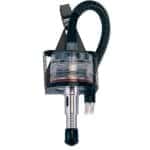
(0 to 4 microns)
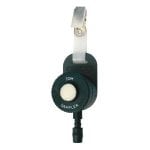
(0 to 100 microns)

(0 – ?? microns) – Not Defined
Each of these samplers have defined methodologies (flow rates, analytical methods) that yield results suitable for comparison directly to the applicable exposure limits (OSHA, ACGIH, NIOSH, AIHA, etc.).
Manganese – A Potential Misapplication of Total/Inhalable Dust
A problem can emerge, however, when utilizing the results from one method, to compare directly to another. Manganese (a common alloy ingredient in steel) presents a good example. Lets examine a theoretical case where an employee is grinding metal containing manganese. Reviewing the published limits (we will only look at ACGIH and OSHA for this example):
- OSHA PEL – 5 mg/m3 (ceiling)
- ACGIH TLV – 0.2 mg/m3 (old TLV – pre-2013), 0.02 mg/m3 (respirable), 0.1 mg/m3 (inhalable)
This OSHA limit has always been dubious. There is no real-time instrument capable of instantaneous measurements of manganese, and quantifying against ceiling limits (while possible) is quite cumbersome and demands great precision (difficult with sample pumps and cassettes). Often, for manganese, hygienists will utilize the ACGIH TLV. As with many substances, ACGIH revised the manganese TLV from a total fraction to respirable/inhalable fractions, as these have been found to better represent human aspiration and the health effect of concern for the material. OSHA is, as always, slow to revise any of their limits, so most of their limits are decades old and don’t represent current scientific opinion.
This divergence in exposure limit methodologies can leave hygienists in a bind. OSHA is the entity that regulates industry, so one would definitely want to consider a total dust approach for metals. The limits set by ACGIH, however, are more protective of employee health and based upon current science, which would direct one more to an inhalable or respirable sampling strategy (depending on the expected particle size). One approach would be to sample for both “total dust” and inhalable or respirable dust for metals. The drawback to this approach is that employees need to wear two pumps and the analytical cost is doubled. A (seemingly) common sense approach is to collect “total dust” samples, and compare the results to both OSHA and ACGIH limits. Surely “total dust” would capture everything respirable and inhalable and more. Below are example sample results for a “total dust” sample, collected on an employee performing grinding and sanding on a carbon steel components:


When the hygienist receives the result for their sample, they compare to the OSHA PELs, and everything checks out. This is a full-shift sample though, so the OSHA PEL for manganese described earlier can’t be referenced (as it is an instantaneous ceiling limit). Grinding and sanding likely emits larger particulate, so the ACGIH TLV for inhalable manganese looks to be appropriate. The “total” manganese sample result (0.036 mg/m3) is below the inhalable manganese TLV (0.1 mg/m3), so everything is well. Right?
This is the problem with “total dust” samplers. Total dust was never defined to have a specific size range, and there is no defined cut point for sampling efficiency. In fact, these samplers have been determined to have an upper size limit (above which nothing is collected) of approximately 30 microns, which is well below the inhalable threshold of 100 microns. That means that a “total dust” sampler collects no particulate from 30 to 100 microns in size!
So whereas common sense would suggest that “Total Dust” > Inhalable Dust > Respirable Dust, in fact the proper hierarchy is Inhalable Dust > “Total Dust” > Respirable Dust.
As such, you cannot determine if the sample result shown above for manganese is in compliance with the TLV. Depending on the composition of the dust, it is possible that the inhalable manganese concentration on this employee greatly exceeds the TLV. Personally I have measured inhalable flour concentrations in industrial environments that are five to six times that of “total dust” results!
“Total Dust” and Real-time Aerosol Monitors
The “total dust” problem is not limited to full-shift cassette samples used for compliance. There are also concerns when using real-time aerosol monitors. Below are three popular instruments used to measure dust concentrations.
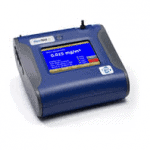
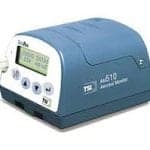

All three of the above instruments are very capable (with the proper flow rates/size speciators) of measuring various sizes of small-diameter particulate (PM1, PM2.5, PM4, PM10). All these instruments can also be operated with no size speciator (impactor/cyclone) in place, theoretically allowing for “total dust” measurement. One should take great care when deploying these devices to perform real-time measurements for larger particulates though. The same effect described for the “total dust” cassette samples also apply for the inlets of real-time monitors….the sampling efficiency is greatly reduced for larger particle sizes. Additionally, depending on the measurement method, many photometers significantly underestimate large particle mass concentrations. I run into this frequently with inhalable flour dust. The TLV for flour dust is quite low and the sampling method is gravimetric (meaning weighing everything). This is problematic, because in many food facilities where you would find flour dust there is also sugar, starch, salt, powdered flavorings, etc.. Real-time monitors are an available tool, but a flawed available tool, in that they cannot effectively measure the entirety of inhalable concentrations of dust, only a portion.
Conclusion
The takeaways from this text should be that:
- “Total Dust” would be better defined as an “unknown fraction of dust smaller than 30 microns”.
- One should not compare “Total Dust” sample results to inhalable dust sampling limits, as total dust samples significantly under-represent the actual inhalable dust concentrations.
- You can compare “Total Dust” results to respirable limits as a worst-case, as 0-4 microns falls within its sampling efficiency.
- Real-time monitors will under-represent large particulate (“total dust” and inhalable dust) concentrations.
- Great care should be taken when utilizing real-time monitors to measure larger particulate. It is highly recommended that integrated filters or complimentary sampling trains be utilized to confirm/correct the results.
In summary, hygienists often have to rely on the available tools to quantify concentrations in work environments. All devices have shortcomings, and “total dust” samplers and real-time aerosol monitors are no different. It is critical that the individuals engaged in determining workplace concentrations are aware of the pitfalls and caveats inherent to the available sampling methods.

